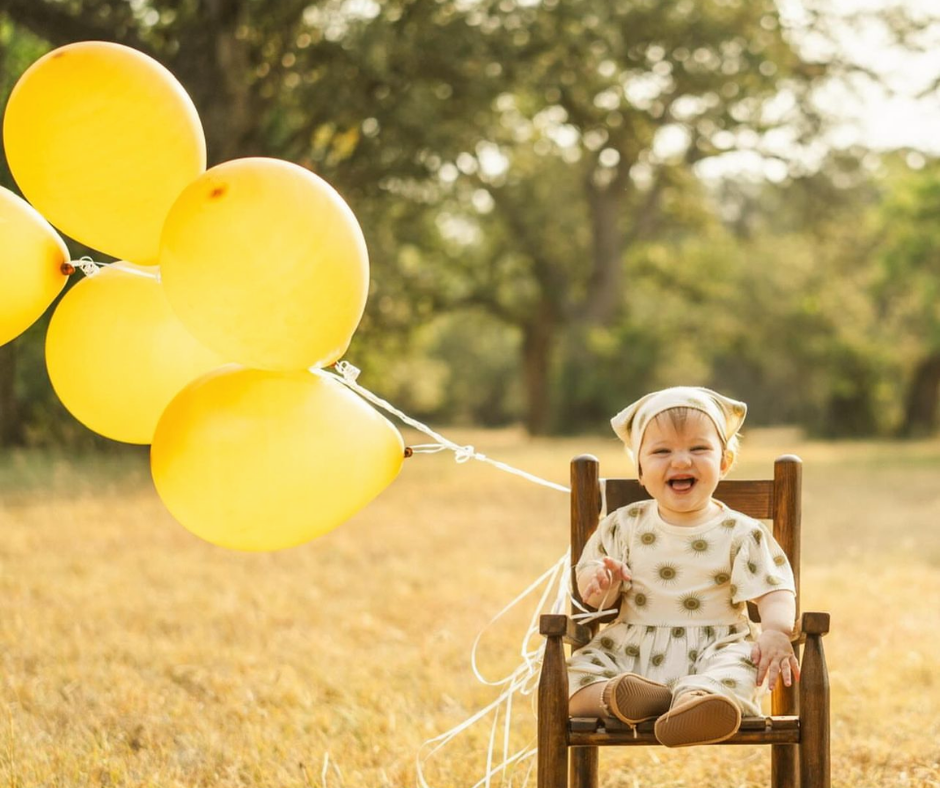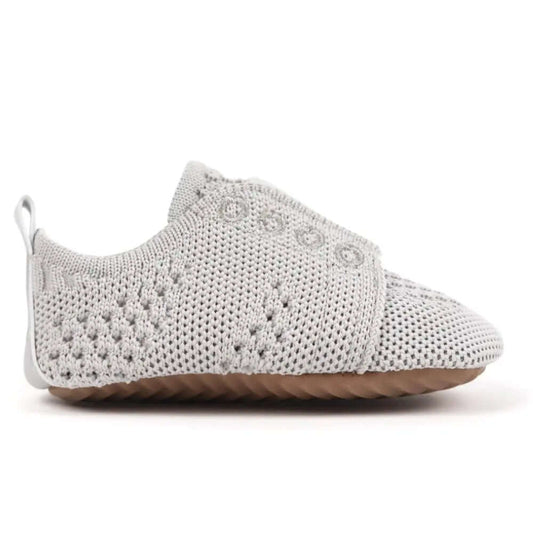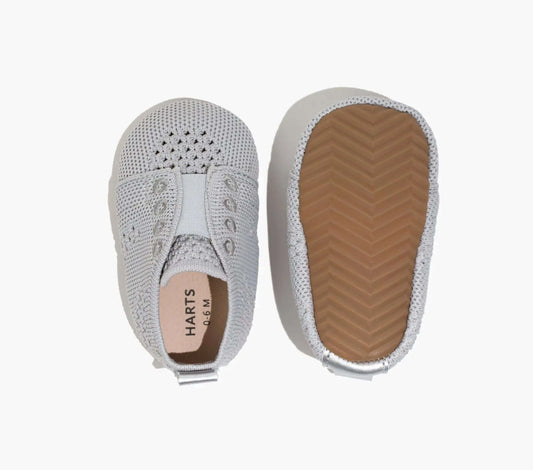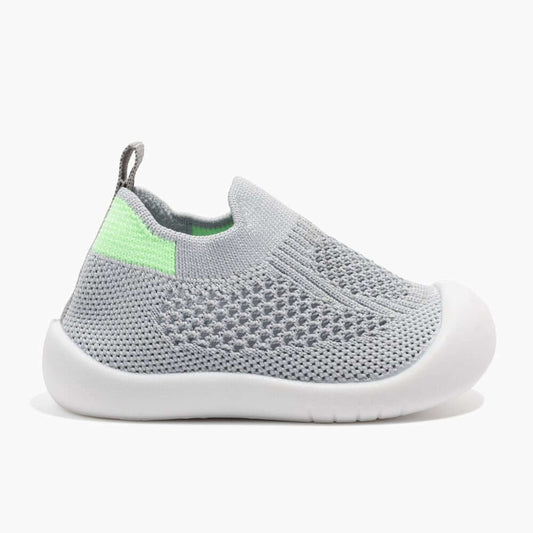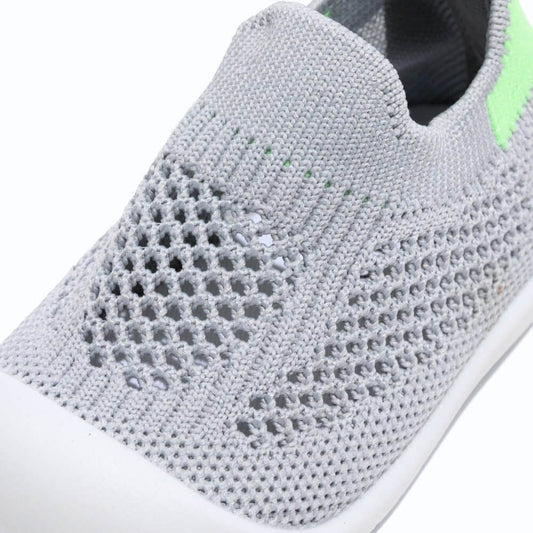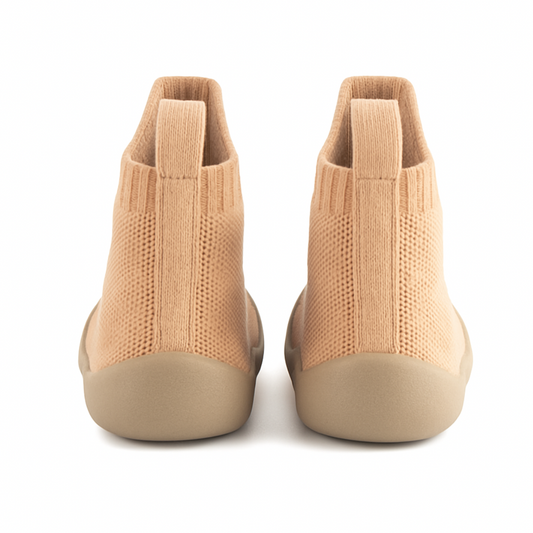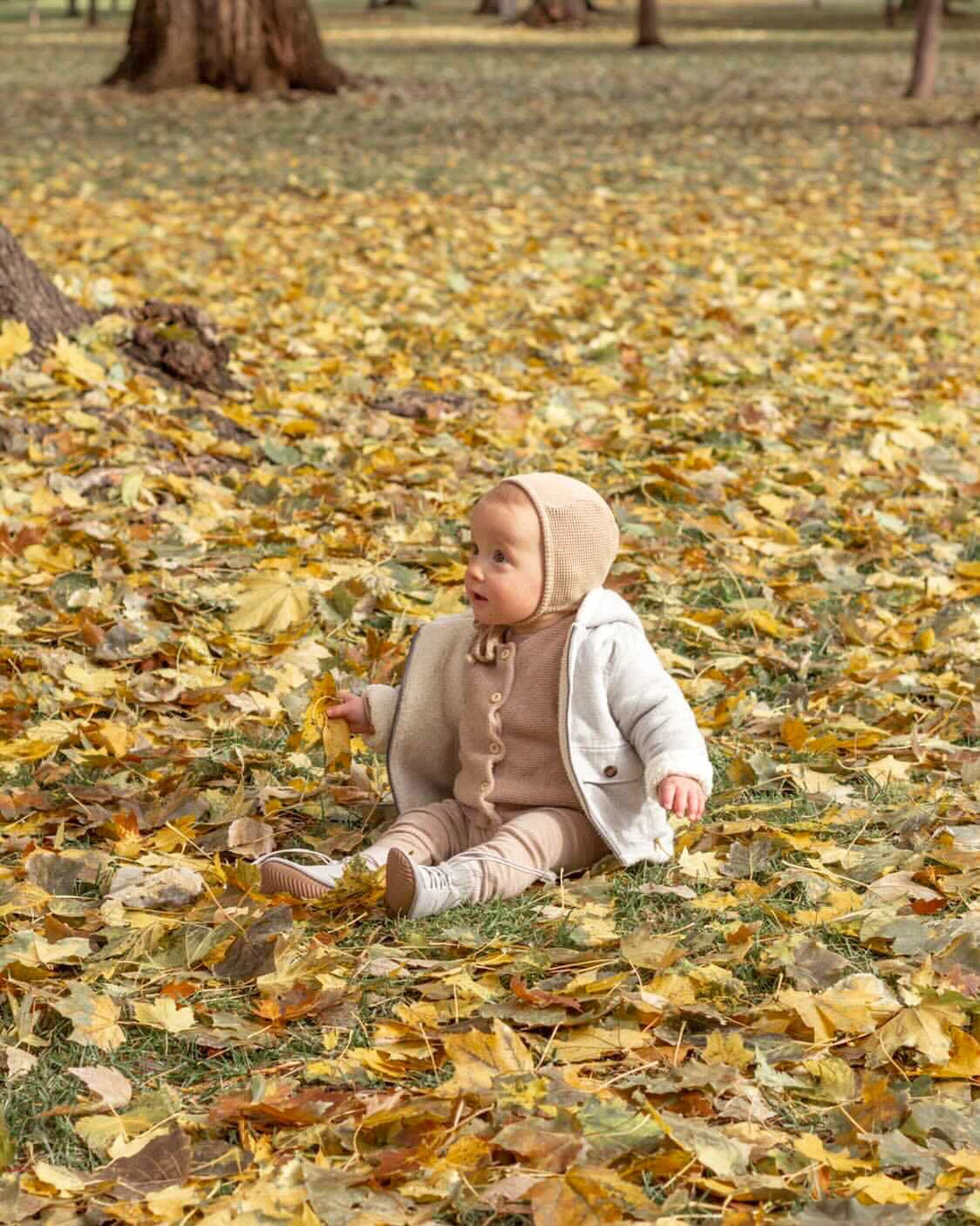
What Are the Best Shoes for New Walkers?
Getting the first pair of walker shoes for your baby is not easy. It is a tug of war between the perfect fit and the perfect style - between functionality and aesthetics. Oftentimes, you as a parent want to do the right thing and go for those shoes that allow your baby to explore their balance and take their first steps as comfortably as possible, and with every bit of grip and support a shoe can offer in this exciting new situation. Your baby, on the other hand, is attracted to the glitter, the unicorns and the embedded LED lights (and let’s be honest… so are you at times). So what are the best shoes for new walkers?
Here are some footnotes (get it) to consider:
-
A flexible thin sole that offers grip and protection
Most podiatrists agree, ideally your baby would learn to walk barefoot, but unfortunately oftentimes that is unsafe, too cold, or unhygienic. The next best thing? A flexible thin sole that offers grip and protection, but at the same time still allows your child to feel the ground they are walking on. -
Lightweight breathable material
Another thing to consider is the material the rest of the shoe is made out of: ideally something that is equally as flexible as the sole, or perhaps even a bit more. Lightweight materials such as soft leather or a high-quality mesh are great. Before putting them on for the first time, you can check the inside of the shoes with your fingers in order to rule out any stitching or hard edges that could cause pressure or even blisters. -
Finding the right fit
Your first time walker can, most likely, not use their words to explain to you what wearing a certain shoe feels like. You will have to use your parental intuition and your fingers to feel if they fit well. You might want to opt for socks like first time walker shoes that fit snug like a sock, but do not fall off so easily. They move with the foot of your baby, even if they grow a bit. -
Less support is better
We used to think that first time walkers needed as much arch and ankle support as they could get - ideally even high-top shoes, but it turns out that this actually increases the risk for ankle injuries when first time walkers fall (which they unfortunately will every now and then). Their little feet are supposed to be flat as their arches are still developing, and softer shoes will allow their feet to grow normally and to develop their musculature and strength, as well as the grasping action of their little toes. -
Comfortable from the first step
It should be clear by now that it is best to opt for shoes that do not need a ‘break in’ period. Ideally all shoes (are you all listening moms?!), but especially those for first time walkers, should be comfortable from the very first moment they put them on. You want to encourage and not discourage this new adventure they are going on. -
Passing shoes on from sibling to sibling
If at all possible, avoid passing on shoes from sibling to sibling. The shoes will have adapted to the shape of their unique feet, and will therefore not offer your first time walker the fit and structure needed for optimal support. Of course it is totally fine to do so for a photo opt or something like that. -
What about special occasion shoes?
But what about those really cute brogue style leather shoes you saw in the shop window that would go perfectly with the little beige linen dress you got your baby to wear at the wedding of your sister? Special occasion shoes are fine for an hour or so, but your baby's primary shoes need to be flexible in order for their foot musculature to develop normally.
So before you go to the store and try to hold on to your 1-year-old who is trying to wiggle their way out of your lap, make sure you have made your mind up about what it is you are looking for. Too much to remember? Here is a short checklist to take with you whether you are shopping online or offline for the best shoes you can possibly get your first time walker:
- Soft material
- Flexible soles
- Padded ankles
- Non-slip bottoms
- Room to move the toes
- Secure fastening that will hold the heel in place
